
5
JulYA: For Teens or Adults?
 One of my favorite responsibilities as a youth services librarian is choosing new young adult books to purchase for the library’s expanding collection. Young adult books (or YA as we say in the library world) is one of the most well-known and fastest growing literary genres in this decade. Most people learn about young adult books through the popular trend of adapting their plots for the silver screen. Recent films like Ready Player One, The Hunger Games trilogy, and The Fault in Our Stars have turned public interest to the books these movies are based on and sparked adult interest in books intended for adolescents.
One of my favorite responsibilities as a youth services librarian is choosing new young adult books to purchase for the library’s expanding collection. Young adult books (or YA as we say in the library world) is one of the most well-known and fastest growing literary genres in this decade. Most people learn about young adult books through the popular trend of adapting their plots for the silver screen. Recent films like Ready Player One, The Hunger Games trilogy, and The Fault in Our Stars have turned public interest to the books these movies are based on and sparked adult interest in books intended for adolescents.
“Young adult literature” is a rather amorphous term that is challenging to define and seems to change every few years. Originally, “YA” came into its own as a bonafide literary sub-genre sometime in the 1950s and 1960s, when novels intended for adults had realistic settings and focused on the issues adolescents were facing at the time. J.D. Salinger probably didn’t intend for Catcher in the Rye to be a massive hit with teens when he published it in 1951 but it’s almost exclusively read as a part of high school curricula and categorized as YA in many library collections today.
By the 1960s, authors were beginning to write specifically with a teen audience in mind. S.E. Hinton wrote her famous YA benchmark, The Outsiders, about teens in rural Oklahoma in 1965 when she was still in high school herself. Hinton cited her dissatisfaction with the state of literature that was considered appropriate for teens at the time as her main inspiration for writing her own YA novel.
Young adult literature really came into its own in the 70s and 80s. Many of the classics of that era are still influential for YA authors and readers today. Books like Forever by Judy Blume and The Chocolate War by Robert Cormier, took an unflinching look at the intense social drama and sex lives of high schoolers. More YA authors began to experiment with the thriller genre for teens, producing hits like The Face on the Milk Carton by Caroline B. Cooney and the Remember Me trilogy by Christopher Pike.
In the past 20 years, young adult fantasy and science fiction novels have been a staple for readers, libraries, and bookstores. The popularity of series like Twilight and The Hunger Games brought young adult literature to the center stage and movie adaptations have drawn more public interest and more publishing dollars to the genre. YA literature has become so popular that adults are taking notice once again. Many libraries host young adult books clubs for adults and we see as many adult patrons checking out YA books as we do teens.
I must confess I’m an adult reader of young adult literature. Part of it is professionally driven as I purchase all the YA books for the library’s collection and run the young adult book club, Books ‘n’ Bites, but it’s also rooted in personal enjoyment with a dash of escapism. Because of the age of the protagonists, YA offers us a way to go back and remember that feeling of endless possibility before the permanence of adult choice and responsibility settles in.
One of the great joys of being the facilitator of the Books ‘n’ Bites YA book club is listening to teens explore and critique the tropes of young adult novels. Many of them love the emphasis on strong female characters and delight in the idea that young people’s actions can change and even save the world. However, they are equally critical of the romantic entanglements that seems to pop up in nearly every YA title. For example, we recently read Eliza and Her Monsters, a modern story of a creative high schooler who publishes her own enormously successful web comic. The titular character not only has to deal with the pressures of continuing to create under the spotlight of success, she also has to cope with living two separate lives: one online, on in the real world. Book club members thoroughly enjoyed those themes but were extremely critical of Eliza’s unhealthy and disturbing relationship with a new boy at her school who derails her success.
There are signs that YA publishing juggernaut is slowing down. A recent conversation with a coworker, a mother of two teens, reminded me of a cardinal truth of adolescents: as soon as adults catch on to something teens love, teens immediately reject it and move on to something else! My coworker’s daughters were already expressing their desire to read adult literature simply because they were sick of how formulaic and predictable YA books have become. In the last two years, books aimed at 18-24 year olds have been gaining popularity. This new sub-genre is called New Adult. Will New Adult experience the same explosion as YA has in the past 20 years? Maybe. Or maybe we’ll all remember that the only thing that marks a particular titles for a particular audience is marketing.
Kate Tigue is the Assistant Children’s Librarian at the Morrill Memorial Library in Norwood, Massachusetts. Read Kate’s column in the July 5 issue of the Norwood Transcript and Bulletin
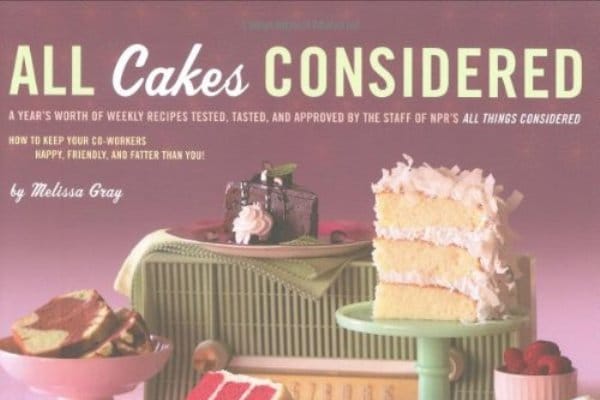
28
JunMaking Radio Waves
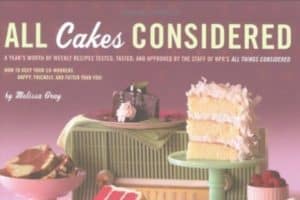 A few weeks ago, I found myself dashing into the house yelling “Alexa, play NPR!” As my smart speakers all came to life simultaneously, my husband and I pulled up chairs on the deck to enjoy one of our favorite radio programs, “Live From Here” (formerly “Prairie Home Companion”). While my husband and I enjoy listening to audiobooks and podcasts on our own, we are one of those rare households that still crowd around the radio at appointed times every week to hear our favorite NPR hosts introduce us to new music, keep us updated on current events, share stories, or give us hilarious car repair advice.
A few weeks ago, I found myself dashing into the house yelling “Alexa, play NPR!” As my smart speakers all came to life simultaneously, my husband and I pulled up chairs on the deck to enjoy one of our favorite radio programs, “Live From Here” (formerly “Prairie Home Companion”). While my husband and I enjoy listening to audiobooks and podcasts on our own, we are one of those rare households that still crowd around the radio at appointed times every week to hear our favorite NPR hosts introduce us to new music, keep us updated on current events, share stories, or give us hilarious car repair advice.
I’ve come to realize that public radio is such an important part of my life. I am up earlier than the rest of my family and most days the hosts on “Morning Edition” are the first voices that I hear each day. Jim and Margery from “Boston Public Radio” keep me company as I do short training rides on my lunch break and I look forward to my drive home with Kara Miller from “Innovation Hub” when I work late on Thursdays. Weekends wouldn’t be complete without laughing with the folks from “The Best of Car Talk” and “Wait, Wait Don’t Tell Me.”
Because we are all such obsessive NPR listeners, I bought tickets for my husband, sister, and me to go see “Live from Here” at Tanglewood in a few days. I am looking forward to the performance, but I wonder how different it will be to add a visual experience to something that is usually just auditory. With that in mind, I did a little research to see if there were other non-radio ways that I could get my NPR fix. As it turns out, there are many!
While I expected to find cookbooks from Milk Street Radio’s Christopher Kimball, I did not expect to find All Cakes Considered: a Year’s Worth of Weekly Recipes Tested, Tasted, and Approved by the Staff of NPR’s All Things Considered by Melissa Gray. This delightful book gives some insight into the favorite confections of NPR staff and one highly recommended recipe for Sweet Potato Pound Cake (among many others). I just can’t wait until the sweet potatoes in my garden are ready to pick so I can give it a whirl.
In poking around the internet in search of books by NPR authors, I realized that I completely forgot about my favorite political commentator, Cokie Roberts. She has written a whole slew of titles, most notably Founding Mothers, Capitol Dames, and Ladies of Liberty. All of these books center around the women that have shaped our nation. Founding Mothers is nothing short of inspiring and is an informative, but genuinely interesting read- perfect for the upcoming Independence Day holiday.
When I really thought about it, there are many, many opportunities to enjoy great radio content outside of the airwaves. Sure, I love listening to “Travel with Rick Steves,” but I haven’t left for a big trip in the last decade without consulting one of his travel guides. Similarly, Will Shortz might be the “Weekend Edition” puzzle master, but the crosswords he writes or edits appear in the New York Times each day.
Once in a while, I find myself having one of those “driveway moments,” where I have arrived at my destination, but need to finish listening to the story before turning off the car. Now that I know there are so many other ways to hear more from these fantastic journalists, I might spend less time sitting alone in the car with my hand hovering over the ignition and more time curled up on the couch with a book.
Alli Palmgren is the Technology Librarian at the Morrill Memorial Library in Norwood, Massachusetts. Read Alli’s column in the June 28, 2018 issue of the Norwood Transcript and Bulletin.
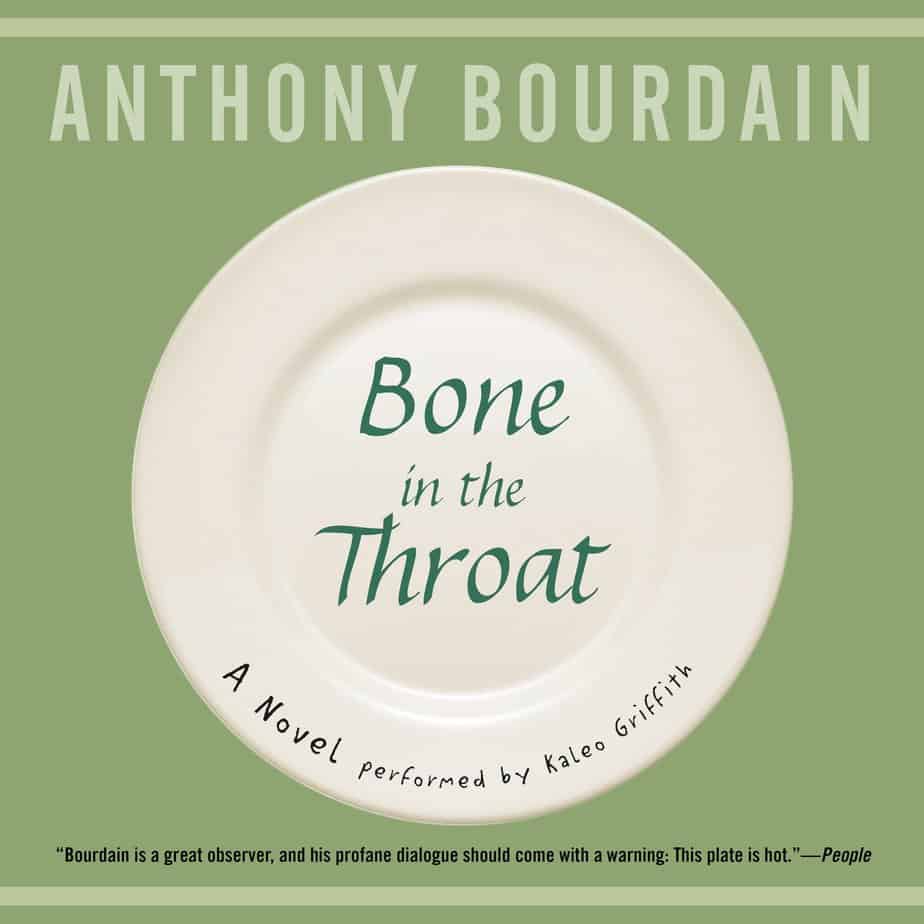
21
JunThe Light and Darkness of Anthony Bourdain
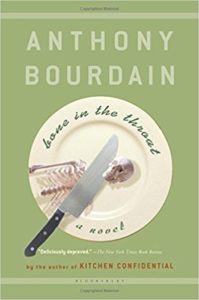 Anthony Bourdain described himself as a child being irresistibly drawn to the headiness of fresh, raw oysters in France. As a young man he was lured to the restaurant kitchen, to the love of food, and the thrills of the unsavory truths of working in food service. Throughout Kitchen Confidential, he admits his attraction to the dark and risky, to drugs and drinking, and to a life spent in restaurants and at bar tables. In that memoir, Anthony Bourdain invited us on a ride through “the culinary underbelly” of the kitchens, freezers, and back alleys of New York City restaurants.
Anthony Bourdain described himself as a child being irresistibly drawn to the headiness of fresh, raw oysters in France. As a young man he was lured to the restaurant kitchen, to the love of food, and the thrills of the unsavory truths of working in food service. Throughout Kitchen Confidential, he admits his attraction to the dark and risky, to drugs and drinking, and to a life spent in restaurants and at bar tables. In that memoir, Anthony Bourdain invited us on a ride through “the culinary underbelly” of the kitchens, freezers, and back alleys of New York City restaurants.
In 1973 Anthony Bourdain left his somewhat affluent home and a New Jersey private preparatory school for college. Vassar – an elite, selective all-women’s college – had opened its doors to men in 1969, just four years before his arrival. Yet, after only two years there, Bourdain dropped out. He had already spent time in Provincetown as a restaurant dishwasher and he had high praise for that job, explaining that he had to learn to work with others, to be on time, and to treat his superiors with respect. It was a few years later, after he returned to school (graduating in 1978 from the Culinary Institute of America in Hyde Park) that he began moving up the line as cook, sous chef, and finally to running restaurants on his own. It was also in these intimate kitchen settings in the 1980s where he became addicted to heroin and cocaine.
After his death by suicide last week, Bourdain was sometimes described by his critics as the fool-mouthed loser, the swaggering rogue, or the lowlife addict. His fans, however, know him more as a man who rose above his addictions to free himself of drugs by the early 90s (Bourdain received at least five years of treatment from methadone clinics). It was around 1994 that a friend challenged Bourdain to write. Bourdain had been a bright student, one who was well-read and who had always found writing easy. And so, Bourdain wrote.
In 1995, his mystery thriller Bone in the Throat was published. The book, described as “deliciously depraved” by New York Times reviewer Marilyn Stasio, is extremely funny and very irreverent. A body washes up on a New Jersey beach after being dumped in the New York Harbor and Bourdain begins to introduce us to his characters – SoHo hipsters, Mafiosos, flirty women and very bad men. They reminded me of Carl Hiaasen’s losers – those hanging around the Everglades and the Florida Keys.
Bourdain followed his first novel with Gone Bamboo in 1979 and again mixed mayhem, assassins and lots of tequila in another murderous swill. He was disappointed with his novels’ lack of the mainstream success. Yet, both were reprinted in paperback editions and Bone in the Throat, with Bourdain as an executive producer, was made into a film. (It did, however, receive mixed reviews and the DVD of the movie does not seem to have been released. There’s no sign of it on Amazon or Netflix).
In 2000, when he was 44 years old and the executive chef at New York’s Brasserie Les Halles, Bourdain decided to write about the life as he knew it – the behind-the-scenes, more often seedy, always raw and steamy, restaurant scene. What began as an essay for The New York Press (a local free-rag) ended up in the very respectable New Yorker magazine as “Don’t Eat Before Reading This.” Soon after, the full-length version published as Kitchen Confidential hit the bookshelves. That book appealed mainly to those who worked behind the scenes and façade of the linen-tablecloth’d, maître-d’d front room of the finest (and not-so-finest) eating establishments around the world. But it also quickly gained fame and readers clamored for more. Bourdain followed with A Cook’s Tour, which included a television show produced in 2000 and 2001 and aired beginning in 2002. This deep dive into world food became a hit on the Food Network and his faithful viewers loved his honest, often humble, sometimes macho take on the world’s dining tables.
At 44, rugged, handsome and charismatic Bourdain had the country, and the world, hooked. Yet, he admits at this time he was working to make ends meet. He had been married to Nancy Putkoski for over twenty years, from his addict days through his first literary and television successes. Finally, it seemed that he had won over some of his earlier demons – those of feeling a failure and a fraud. Anthony Bourdain’s Les Halles Cookbook was published in 2004, followed by Nasty Bits (2006), No Reservations (2007), and Medium Raw (2010).
Bourdain’s respectful celebrity grew with 35 episodes of A Cook’s Tour (2002-2003), nine seasons and 142 episodes of No Reservations. By the time of his death by suicide on June 2018, Bourdain had written 13 books and he was the immensely successful journalist/celebrity/host of the CNN program, Parts Unknown in its 11th season. He was, however, twice divorced (although that second divorce had not been finalized).
After his death, the world focused on Bourdain’s critical acclaim and the crucial need to prevent other deaths by suicide. Yet, many readers’ questions will be answered in his books when he shared his passions and his demons. He was inspired by books and reading. He loved passionately, especially as a father. Yet, he often spoke of the darkness and loneliness in his life.
In Anna Karenina, Leo Tolstoy wrote that “Happy families are all alike; every unhappy family is unhappy in its own way.” In the introduction to one of his last books, Appetites: A Cookbook, Anthony Bourdain writes that “Tolstoy never spent any time with my happy family.” At the time of publication, Bourdain’s daughter was 8 years old and it might have been Bourdain’s happiest time. He had finally found fame, wealth, and at the same time, contentment with his wife and daughter and professional life. Bourdain traveled about 260 days a year, yet he always carved out a five-day respite every month to spend with his daughter. He writes, in that introduction, that he made major changes in his lifestyle when his daughter was born. He was no longer “the star in his own movie.”
Every talk show featuring Bourdain and every speech he wrote portrayed an honest, humble man who was accessible and approachable. He rarely turned down an interview or an opportunity to write the introduction to another cook’s book. By the age of 61, he seemed to have overcome the personal failures of his youth. I have huge respect for the man and it has saddened me that his demons still lurked below the surface of success. A history of good food, adventurous eating and honest philosophy in his books is what Bourdain has left behind for us.
Charlotte Canelli is the Director of the Morrill Memorial Library in Norwood, Massachusetts. Read Charlotte’s column in the June 21, 2018 edition of the Norwood Transcript and Bulletin.
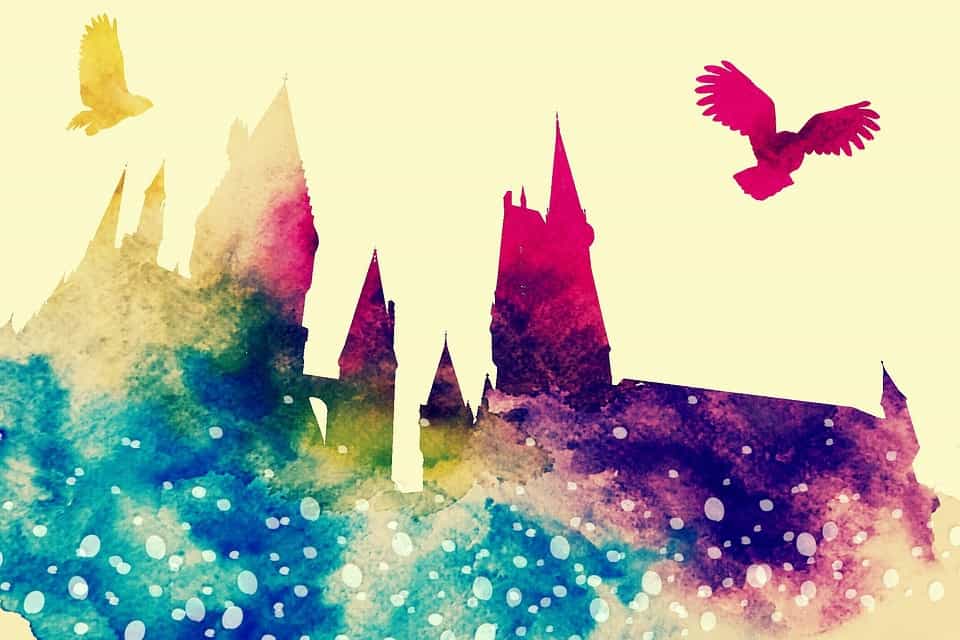
14
JunDiving Into a Book
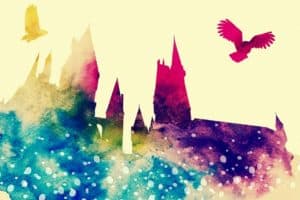 We all love to find a book that we can dive into. If that book changes our outlook or carries us away to a whole new world, all the better.
We all love to find a book that we can dive into. If that book changes our outlook or carries us away to a whole new world, all the better.
“If I Could Dive Into the World of Any Book” was the very topic of our essay contest this year for the younger participants. Thanks to the Andrew and Ernest Boch Memorial Fund, the Outreach department ran this event for the 7th year in a row. Not surprisingly, the books chosen and the worlds disclosed were as varied as our own town’s population.
Before going any further, however, this might be a good place to announce the names of our essay contest winners:
Level 1: Sylvie Deeks (First Place), Jordan Shea (Second Place), Reegan Pritchard (Third Place), Daniel Gomez (Honorable Mention), Bridget Kidd (Honorable Mention), and Caden Sheehan (Honorable Mention)
Level 2: Bridget Stenstrom (First Place), Thomas Nee (Second Place), Emilia Org (Third Place), Charlotte Martino (Honorable Mention) and Mary Flaherty (Honorable Mention)
Level 3: Alyssa Lahaise (First Place), Aanchal Nigam (Second Place), Jonathan Dana (Third Place), Joseph Gallant (Honorable Mention) and Paul Weinbaum (Honorable Mention)
If you are looking for some good Summer Reads, the books mentioned in these winning essays might be just the thing. And, if you haven’t discovered the Harry Potter series by J. K. Rowling yet, Sylvie Deeks would ask “What are you waiting for?” After all, who wouldn’t want to learn how to perform the “Wingardium Leviosa” spell used by Hermione Granger in order to make things float? As Deeks wrote, “Imagine being able to make the boys in my class float up in the air after they tease me!” That would certainly come in handy. Likewise, Bridget Kidd followed suit and chose to enter Harry Potter’s world as well. She had her own reasons, though, like trying out the game of Quidditch and the many different foods that Hogwarts offered.
Bridget Stenstrom and Jordan Shea both took a more empathetic view. They both chose the book Wonder, by R. J. Palacio to write about because they wanted to befriend the main character, Auggie, who was born with facial differences and who underwent 27 surgeries in his 10 years. In a beautiful way, Shea concluded that “I would want to be friends with Auggie not because I have to but because I think he would be a nice friend.” Stenstrom declared that she “would want to see through his eyes how hard it is to live with kids making fun of him every day.”
Most likely there are a lot of Charlotte’s Web fans out there, too. Reegan Pritchard did a nice job of reminding readers why Charlotte and Wilbur’s friendship is a reason to dive into their world. They go to such lengths to help one another, and Pritchard felt she would be “lucky” to be part of their “amazing and awesome world.”
For a change, Caden Sheehan described a world of baseball in Honus and Me by Dan Dutman. Sheehan thought he might like to go “back in time …to watch Jonus Wagner play a baseball game at the position of shortstop and to see how good he really is.” And while it might be a stretch, Daniel Gomez wooed us into thinking that Dog Man by Dav Pilkey would be a world of great fun and hilarity. After all, there are secret labs and police stations and a gigantic vacuum that can suck up anything.
That said, Thomas Nee chose the book Hatchet by Gary Paulsen because he wanted to have a real-life survivalist adventure. When the character Brian Robeson’s plane crashes in the wilderness, he survives with the only tool he brought with him—his hatchet. He lives in the wilds of Canada for 54 days. Nee admires how Brian “stayed so calm and still” when he came in contact with a bear. After all he endured, Nee said he “felt like I was with him [Brian] the whole time.”
Of course, sometimes we want to fall into a book that is completely nonsensical. That was the case with Emilia Org’s choice. She picked The Giraffe and The Pelly and Me by Roald Dahl. Org would be happy to join the adventures of these characters so she could “build my dream house” that would have a candy factory on it. Yum! Likewise, Mary Flaherty picked a beloved and magical world from A Wrinkle in Time by Madeline L’Engle. For Flaherty, it was as much family love as the adventures. As she wrote: “Also I like when everyone ends up at the house and they are all so happy to be together with their whole family including their long lost father.”
On the other hand, Charlotte Martino picked a world that many of us would chose to avoid—that of The Hunger Games by Suzanne Collins. If she could be like Katniss, the main character who survives death and the Hunger Game arena, Martino said it “would be like a dream.” Martino admitted that the situation of being hunted “wouldn’t be the best,” but with Katniss by her side, this adventure might be worth it.
And while all that diving into book worlds is wonderful, the adult essays addressed another favorite topic, that of libraries. The prompt for this group was to “Write About Any Library—Real or Imaginary, Large or Small—and What It Means to You.” Most of our participants wrote about real libraries, but not Alyssa Lahaise. She imagined a tree, with “long, willowy branches” which “fan out around the bumpy trunk” right in the middle of her perfect library. Not to mention, floating platforms and high balconies overladen with “purple buds.”
Aanchal Nigam thought a “personal library could be someone’s very own paradise,” and many of us would agree, while Jonathan Dana creatively reminded his readers that libraries can be musical ones as well. As he penned, “Where most libraries comprise of books, my special library consists of over 1,500 CD’s.” And when the day seems troubling, a favorite song can be the perfect solution.
Leave it to Joseph Gallant to bring a pragmatic side to these library visions. He realized that his dream library “couldn’t exist in real-life because of strained and limited federal, state, and municipal budgets.” Don’t we know it! This contrasted with Paul Weinbaums’ real-life memory of his first library job in the American Museum of Natural History where he remembered “An English-born librarian hosted tea with pastries during our very proper Saturday breaks.” Sign us all up for that experience. We will be sure to order the scones and clotted cream.
All in all, we could not ask for a more fabulous array of essays that were submitted this year. We wish we could offer prizes to all who entered, but we had to select these few winners. We hope everyone will join us in listening to their words at the celebration on June 18th from 7-9. After all, you can never have too many books and libraries, can you?
Nancy Ling is the Outreach Librarian at the Morrill Memorial Library in Norwood, Massachusetts. Read Nancy’s column in the June 14th issue of the Norwood Transcript and Bulletin.

7
JunNavigating Retirement and the Social Security Maze
 Everyone who knows me, particularly my family, realizes how much I love my job. Ancient philosopher Confucius is attributed with saying something like this: “Choose a job that you love and you never work a day in your life.”
Everyone who knows me, particularly my family, realizes how much I love my job. Ancient philosopher Confucius is attributed with saying something like this: “Choose a job that you love and you never work a day in your life.”
Certainly, in my profession that is very true. Most librarians are insatiably curious about knowledge and they love to give that knowledge away. It makes us a strange breed of generous know-it-alls who live that passion 24 hours a day.
That said, there does come that time to retire from “work” and enjoy those Golden Years we have heard about. This year I reached the magical year of 66 when retirement seems more of a reality than it ever has.
The original Social Security Act of 1935 set the minimum age for receiving full retirement benefits at 65 with reduced benefits at age 62. In 1983, amendments to the Act phased in a gradual increase from 65 to 67. For those of us born before 1959, full retirement benefits start at 66 and for those born after 1960, the age is 67.
My peers seem to fall into two groups. There are those who have put off seriously thinking about retirement, often upping the age we think we will take the leap because we can’t quite wrap our heads around ending our work, let alone gainful employment. Then there are those who have been counting the days and hours until they are 55, 60 or 65.
I actually consider myself to be retiring for the second time. I was home for over two decades in my late twenties to late forties raising my children. While motherhood can be an all-consuming and exhausting “job,” I did have a lot of time for many of my pursuits (quilting, education, reading, travel, etc.) I often tell people that I came out of retirement to begin my career as a professional librarian.
It was only a few years ago when we hit 60 that Gerry and I sat down to think seriously about the issues related to retirement. We realized at that time that we knew nothing about Social Security or Medicare benefits… and still don’t know much. We’ve approached advisors at the Social Security offices in Norwood and learned that we needed to register for Medicare Part A on our 65th birthdays. I learned that I might begin collecting my benefits and investing them before retiring on a municipal pension. (Those of us who work for the towns and cities in Massachusetts do not contribute to Social Security, but many of us paid into the system and earned some benefits while working outside of municipalities in earlier years.)
And so, learning about the financial end of retirement is a confusing wealth of information. And while the Internet can answer many questions, it is helpful to have other experts guide us. That’s where your local library can help.
While I don’t intend to retire for four more years at age 70, Wes Moss tells the rest of you that You Can Retire Sooner Than You Think! Moss is a financial planner who claims that you don’t need to invest in lottery tickets (and win)… or wait until age 75 or more to have the money to retire. He’s got some suggestions that include paying down your mortgage and finding some wise income sources. Obviously it takes reading his book and putting his principles into practice to hit your own retirement sweet spot.
Marc Lichtenfeld has a similar approach in You Don’t Have to Drive an Uber in Retirement (2018). Some of his advice includes paying less for your medical care (engaging in “medical tourism”) and generating more income that you’ll need to put away and/or invest.
Emily Guy Birken writes for several personal finance sites, including her own column “Live Like a Mensch”. Her 2014 book, The 5 Years Before You Retire gives advice for those who have put off planning until their sixties. Birken claims that in just five years you can maximize your retirement funds by increasing your 401K contributions, changing your housing options, and enrolling in Medicare. Birken wants you to live comfortably in retirement.
The above-mentioned books are available at our library and in the Minuteman Library Network catalog. A digital book – one that you can download to your device(s) from OverDrive – is Jane Bryant Quinn’s How to Make Your Money Last: The Indispensable Retirement Guide. Everyone knows Ms. Quinn from CBS News broadcasts, Take Charge (PBS), Woman’s Day and Good Housekeeping. What you might not know about her is that she helped develop the Quicken Financial Planner software. Quinn advocates turning your retirement savings into a regular paycheck and shares the tricks of manipulating Social Security or your pension and the equity in your home, taking smart risks along the way.
Other books deal with Social Security conundrum that many of us avoid until we are forced to – just like our infrequent visits to the Registry of Motor Vehicles! Social Security Made Simple by Mike Piper (2017) is only 100 pages. He explains how benefits are calculated – your own and your spouse’s. If you are receiving a pension once you retire, it might make sense to invest your early Social Security checks rather than wait.
What would Social Security advice be without a book for Dummies? Jonathan Peterson’s latest edition was just published in 2018. Authors Philip Moeller and Laurence Kotlikoff have written a Get What’s Yours series that includes two books aimed at maxing out your benefits in retirement: Get What’s Yours for Medicare (Maximize Your Coverage, Minimize Your Costs) and an updated and revised version of Get What’s Yours (The Secrets to Maxing Out Your Social Security). Their philosophy is making sure you get all that you put in over your lifetime of work.
Various authors contributed to the Social Security Quickstart Guide and it’s available as a digital book on Hoopla!, the Library’s streaming and downloading service.
The Official Social Security Administration Answers to 100 Frequently Asked Questions About Retirement, edited by John Weber, was just published in 2018. While the book is not written or sanctioned by the Social Security Administration, editor Weber has included advice and information from thousands of pages of official Social Security publications. He writes that the Social Security Administration is an “incredibly complicated program with 2,728 core rules and 1000s of codicils,” and Americans are losing unclaimed benefits. This might be an excellent place for me to start as we begin navigating the maze of Social Security and our eventual retirement.
Charlotte Canelli is the Director of the Morrill Memorial Library in Norwood, Massachusetts. Read Charlotte’s column in the June 7, 2018 edition of the Norwood Transcript and Bulletin.
